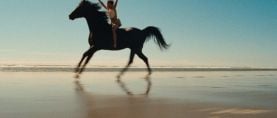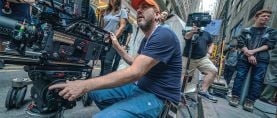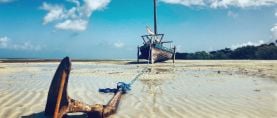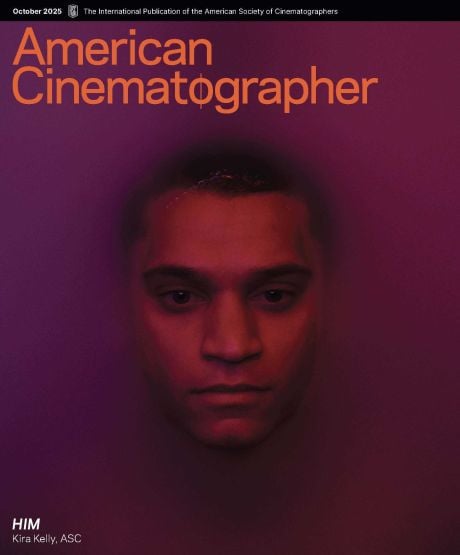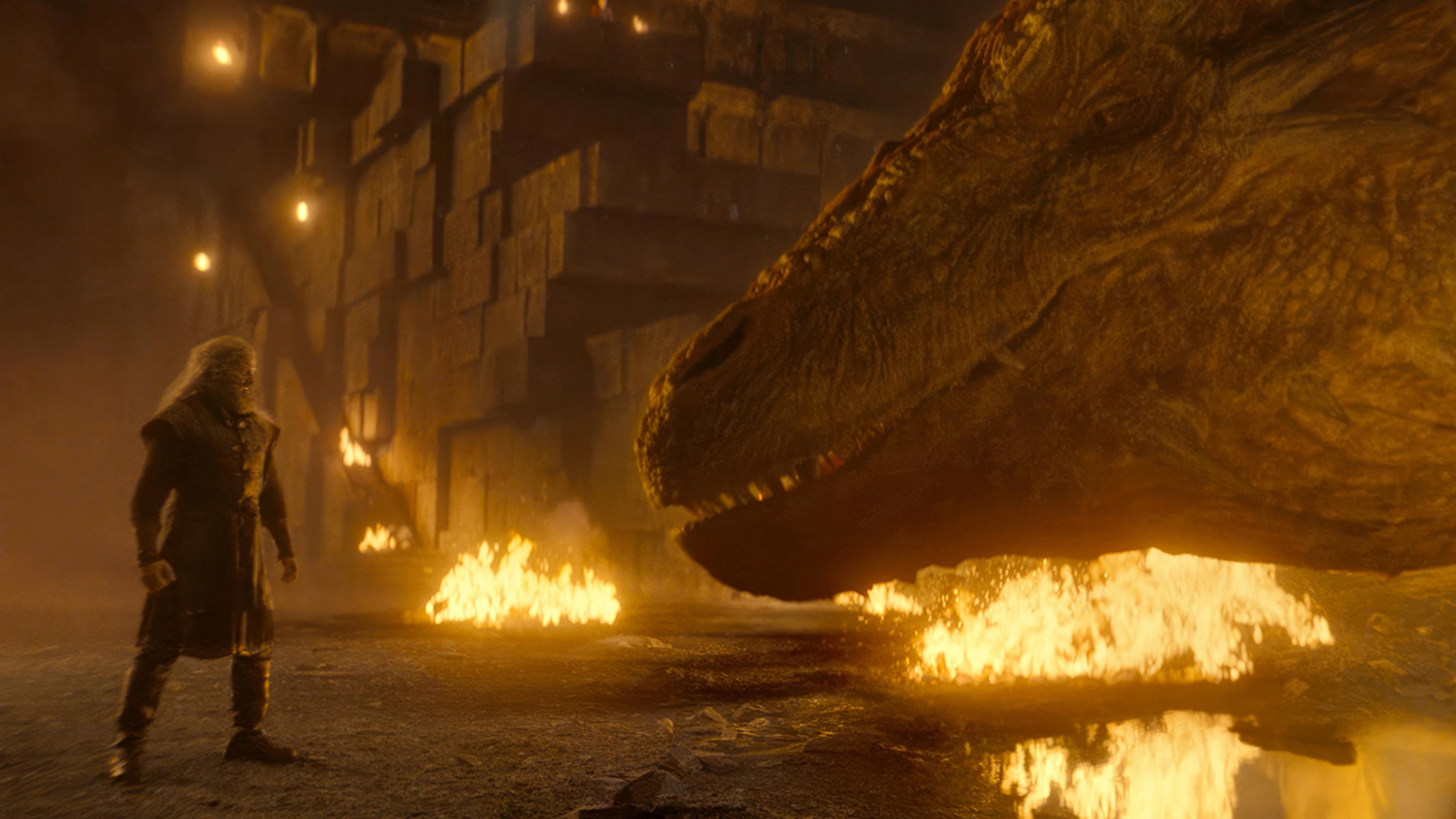
Creating a New World: House of the Dragon
Vanja Černjul, ASC details his role in reinventing the world of Westeros for the second season of the HBO fantasy series.
When Vanja Černjul, ASC was asked to come on as one of the four cinematographers shooting the second season of House of the Dragon, he was stepping into uncharted waters in multiple ways. He had never shot on an LED volume before, which would be vital for the show, on top of the pressure that comes hand in hand with taking on such a huge franchise. Černjul easily rose to the occasion, finding a way to put his spin on the sprawling fantasy behemoth. (You'll find our coverage on Season One here.)
“With House of the Dragon, what is in front of the camera has such a visual strength that you can take more liberties, which is great for a director of photography.”
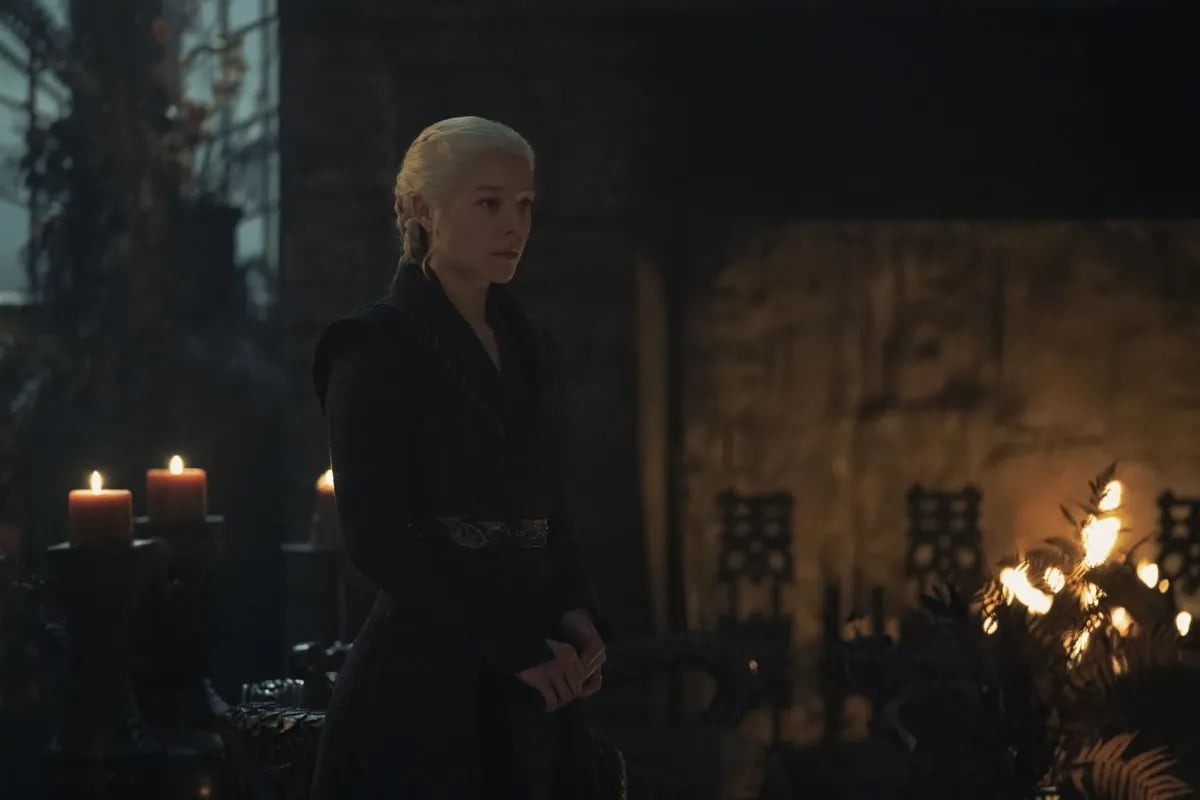
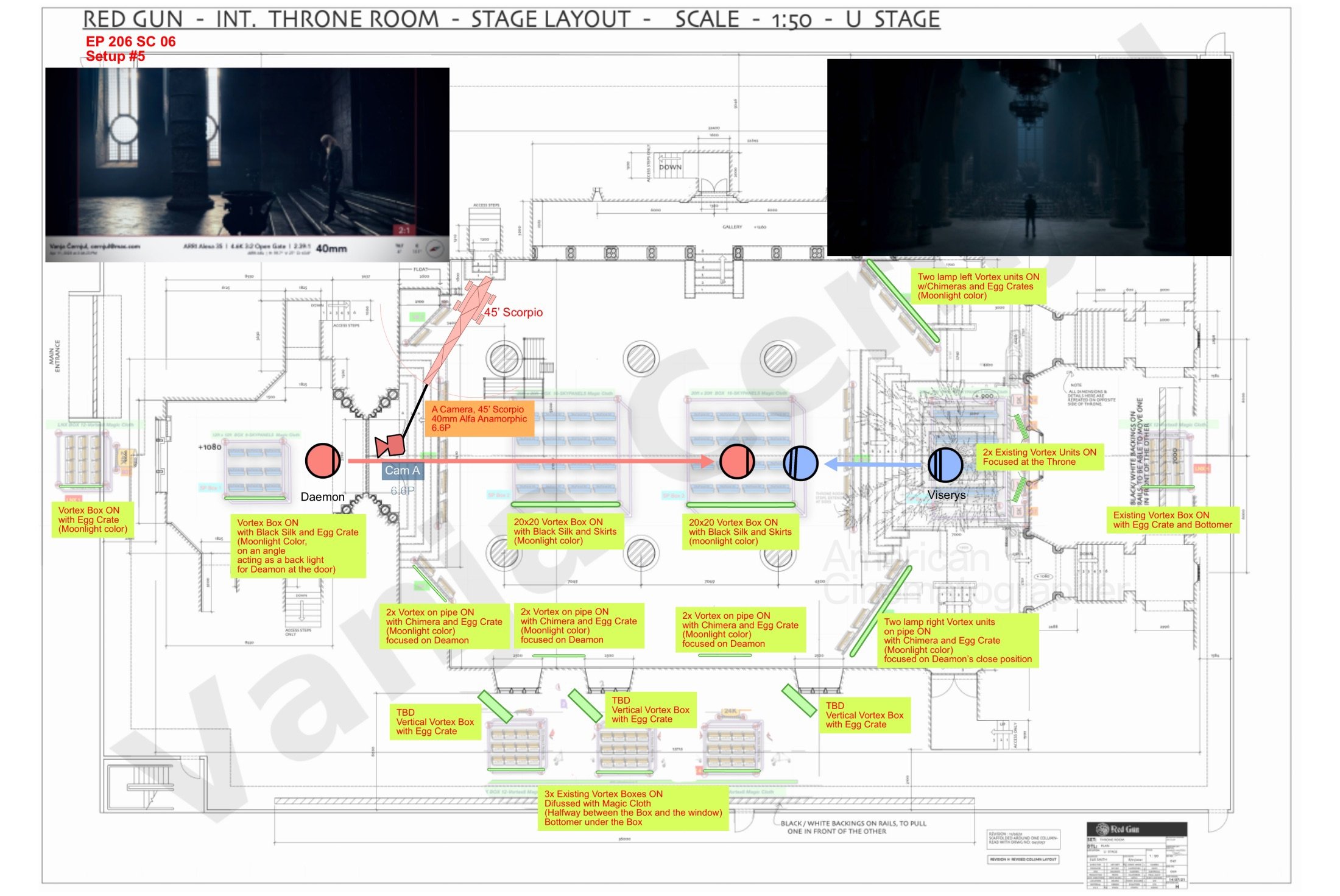
In prep, he worked with the other season two cinematographers to find ways to elevate the show and take it to new levels from season one. While much of season one was filmed on stages and against an LED volume screen because of the restrictions of traveling during the COVID-19 pandemic, season two was under no such constraints. The story called for vast amounts of location work, as well as scenes created on the volume and via visual effects.

The scope of the show called for changing techniques. The team decided to move from the Arri Rental Alexa 65, which Season one was shot on, to the Alexa 35, pairing the sensor with Arri Master Primes and Arri Rental Alphas. This allowed Černjul, along with the other cinematographers involved — including P.J. Dillon, ASC, ISC; Alejandro Martínez; and Catherine Goldschmidt, BSC — to lean into a lighting style that highlighted the incredible locations where season two was filmed.
Černjul shot episodes six and seven of the season. Shooting took place primarily in London for seven months, though he traveled Spain and Wales as well, each for a month. While many of the locations were practical, that could not always be the case. Creating the spaces that physically could not exist in the real world, either because of scale, fantasy elements, or both, was a challenge. Much of the prep time for the two episodes was spent working on several sequences in a new location called Dragonmount, which would have to be created with visual effects, calling for an extensive bluescreen shoot. Černjul says, “That set was really an adventure.”
In episode six, the viewer sees Dragonmount for the first time. The gigantic cavern is the home of Rhaenyra Targaryen’s dragons. For scenes in both episode six and seven, there would have to be interaction between characters and the dragons within the space. For one scene, there was even a complicated stunt sequence involving setting 12 men on fire. Černjul recalls, “The main challenge was trying to figure out the scale and where we were in the cave. Orientation when you are working in a huge bluescreen stage takes constant focus to just try and figure out what the space is supposed to be and where you are supposed to be in the space”.
For the dragon riding sequences, Černjul worked with an LED Volume. In prep, he was able to work out a new way of shooting the dragon riding scenes to add an organic, handheld feeling to the camera operation. Černjul explains: “Our ambition was to make it feel as real as possible, as if there was a camera operator sitting on the dragon”.
The diversity of episodes six and seven took Černjul to remote locations with hardly any crew to huge stages with visual effects-heavy sequences; “What’s beautiful about this project is that every scene, every episode is different. Sometimes you just have two actors in a room and you shoot it like a family drama. Other times, we had to pair down the gigantic crew to a skeleton crew so we could hand carry the camera and tripod in a remote location”.
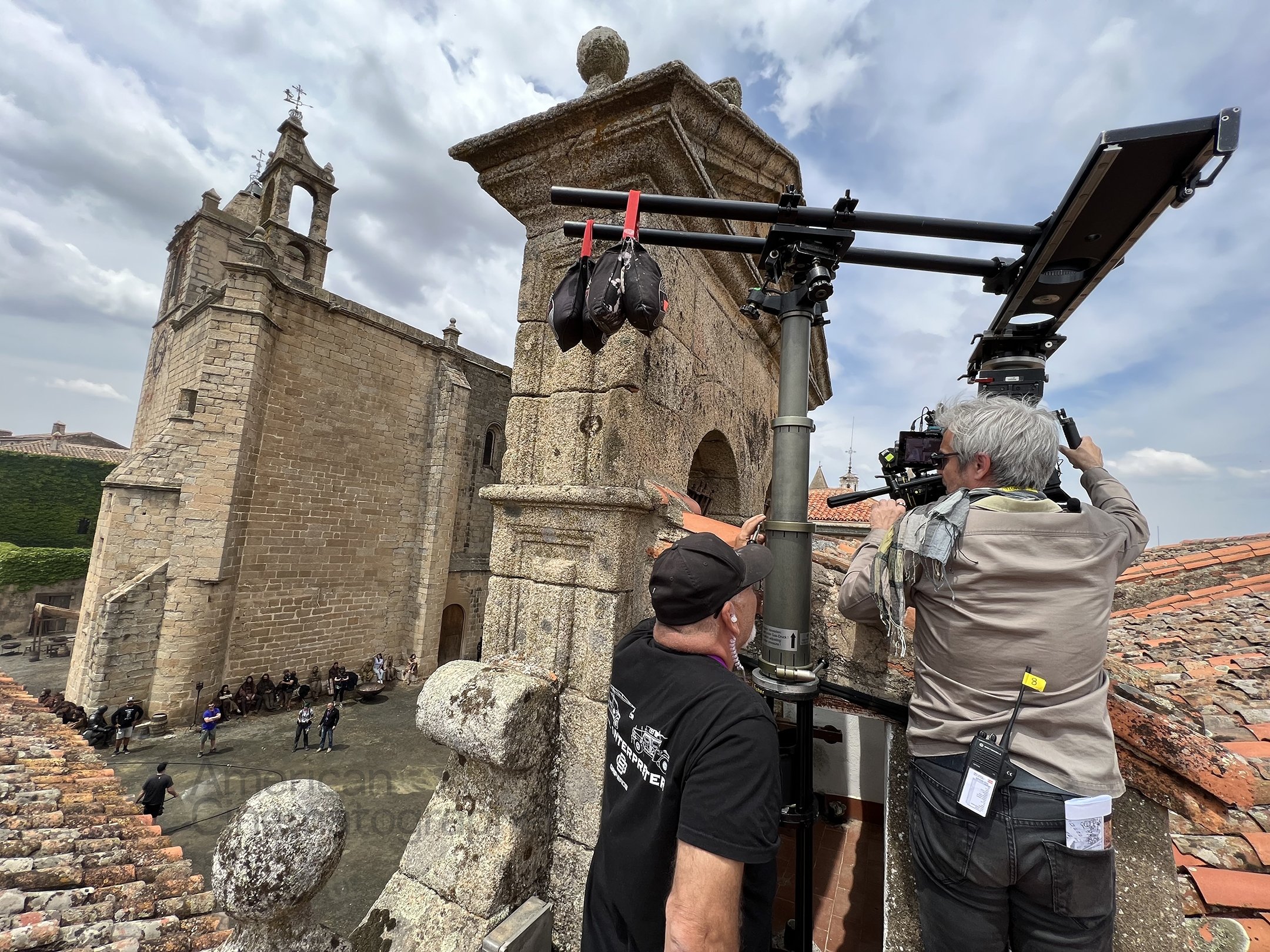
One particular challenge of episode six came from a sequence that called for hundreds of extras shooting on location in a medieval city in Spain. The scene followed two characters exiting the Red Keep, all the way through the throng and into a carriage a couple hundred feet away. The goal was to stay with the characters the entire time, as they went down a narrow staircase and pushed through the crowd. Logistically, this required creativity to figure out how to safely follow the actors on the staircase.
Černjul and director Loni Peristere were working together for the first time on episode seven of the season. It was important to find a common lexicon and learn each other’s aesthetic tastes quickly. The pair turned to classic cinema, using references from films including Once Upon A Time in the West to inspire their shot listing.
Černjul and Andrij Parekh, ASC — the director of episode six — had known each other since film school but had never worked together. They also turned to classic cinema in their references, citing North by Northwest as inspiration for the scene where Addam of Hull is being chased by Sea Smoke the dragon.
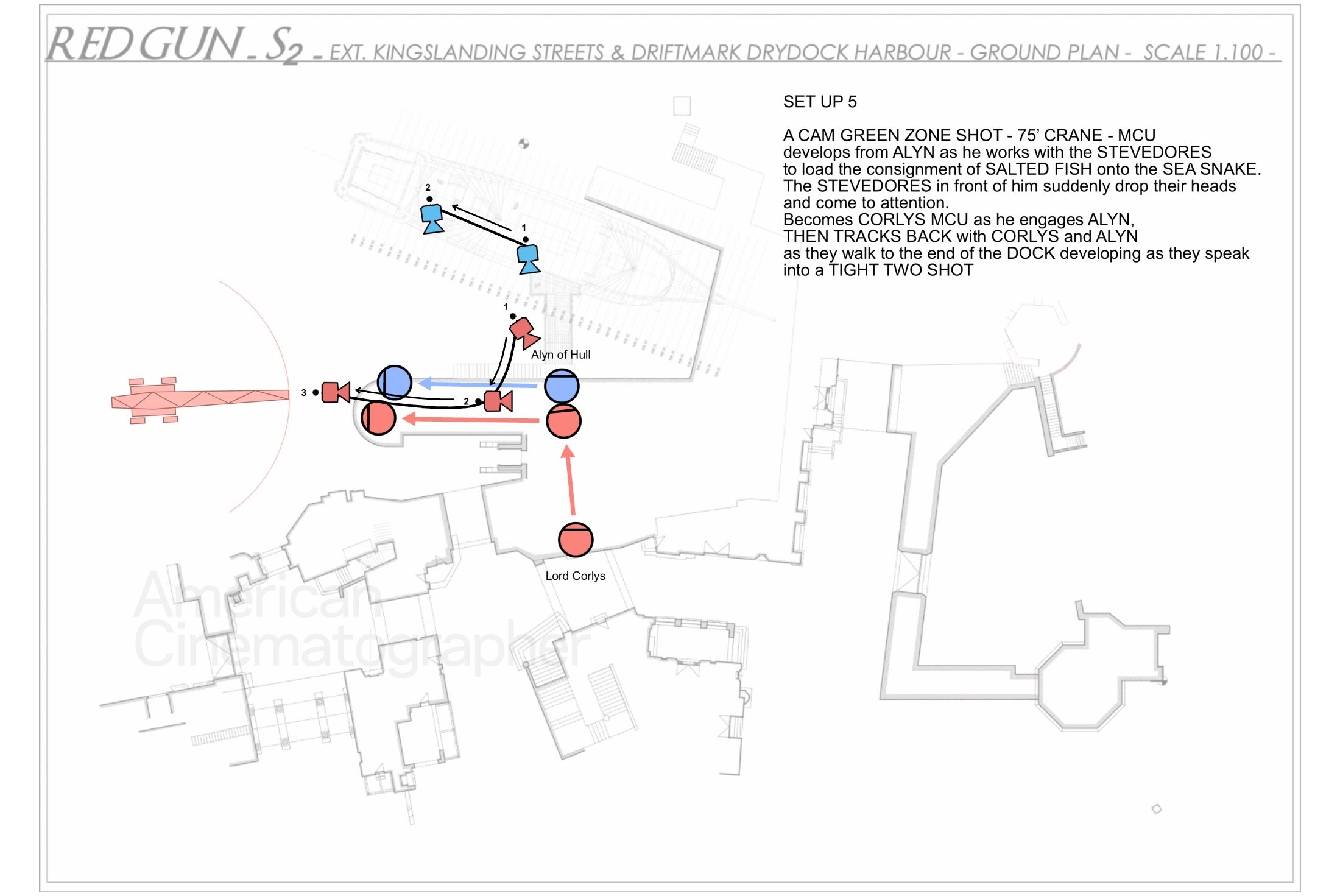
Parekh previously directed several episodes of the drama Succession, where he developed an observational style of shooting. For a tense scene in episode six, in which the small council meets with Prince Aemond, the team leaned into a different style of shooting, with two cameras following the action organically and the operators instinctively turning to the characters that seemed to be of the most importance in the moment.
Černjul explains, “The beautiful thing about House of the Dragon is that, because it has such a strong visual identity just from the sets and costumes and the ways that the actors are holding themselves, you can do experimentation like this without it feeling like a different show”.
Whether shooting a two-person scene on a remote beach with one camera, or orchestrating five cameras to capture a fight between men and dragon, Černjul was committed to finding the right visual style to reflect the tone and story being told in each scene. Working in tandem with directors Parekh and Peristere, this style often morphed into different styles of filmmaking.
Černjul reflects, “With House of the Dragon, what is in front of the camera has such a visual strength that you can take more liberties, which is great for a director of photography.”
